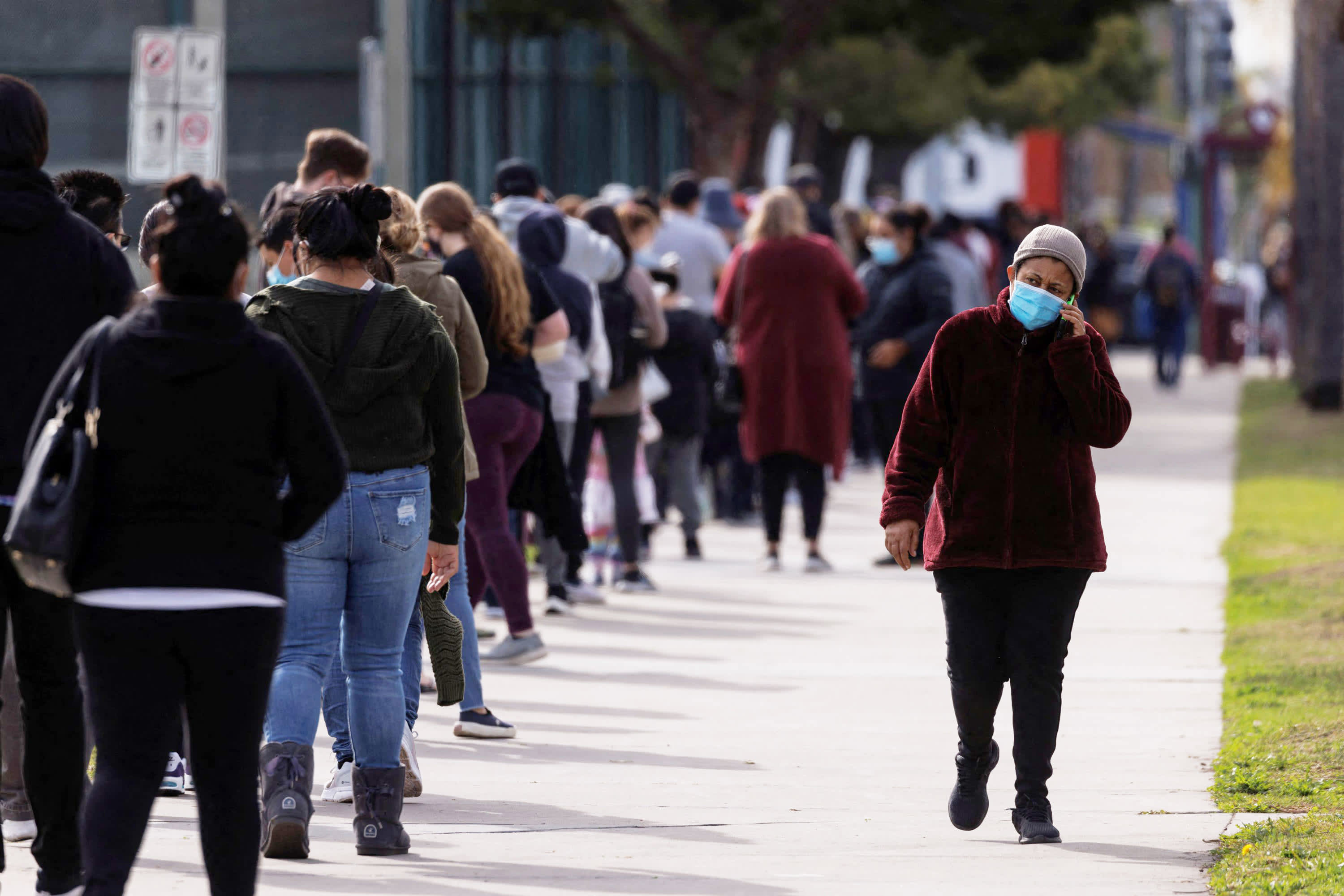
People wait outside a community center as long lines continue for individuals for COVID-19 testing during the outbreak of the coronavirus disease (COVID-19) in San Diego, California, January 10, 2022.
Mike Blake | Reuters
The World Bank slashed its global growth forecast for 2022 and 2023, and cautioned that a rise in inflation, debt and income inequality could jeopardize the recovery in emerging and developing economies.
Global growth is expected to slow to 4.1% in 2022 and 3.2% in 2023 as more nations start unwinding unprecedented levels of fiscal and monetary policy support to tackle the fallout from the coronavirus pandemic, the bank said in its “Global Economic Prospects” report on Tuesday.
The projections follow a strong rebound in global growth as demand soared after Covid-related lockdowns lifted. The World Bank estimated that the world economy grew 5.5% in 2021.
Major economies including the United States, China and countries in the euro zone are expected to slow down this year, the bank said. It added that a resurgence in Covid infections, due to the highly contagious omicron variant, will likely disrupt economic activity in the near term and could worsen growth projections if it persists.
Ongoing supply-chain bottlenecks, rising inflationary pressures and elevated levels of financial vulnerability in large parts of the world could increase the risks of a “hard landing,” the World Bank warned. A hard landing refers to a sharp economic slowdown following a period of rapid growth.
There’s a growing canyon between [emerging economies’] growth rates and those in advanced economies.
David Malpass
president, World Bank
The World Bank is the first major global institution this year to come out with growth projections. The International Monetary Fund is expected to release its World Economic Outlook update on Jan. 25, Reuters reported.
Growth projections
Growth in China is set to ease from an estimated 8% in 2021 to 5.1% this year, partly due to the lingering effects of the pandemic as well as additional regulatory tightening from Beijing, according to the World Bank.
Advanced economies are predicted to slow from 5% in 2021 to 3.8% in 2022, which the World Bank said will be “sufficient to return aggregate advanced-economy output to its prepandemic trend in 2023 and thus complete its cyclical recovery.”
On the other hand, emerging markets and developing economies (EMDEs) are expected to “suffer substantial scarring to output from the pandemic.” Their growth trajectories would not be strong enough to return investment or output to pre-pandemic levels by 2023, according to the report.
Broadly, EMDEs are predicted to slow from an estimated 6.3% last year to 4.6% in 2022. For some smaller nations or even countries that rely heavily on tourism, the economic output is expected to stay below pre-pandemic levels, the bank said.
Worsening inequality
The coronavirus pandemic has worsened income inequality, particularly between countries, the World Bank said.
It referred to data that showed 60% of households surveyed in EMDEs experienced a loss of income in 2020, while those in low-income countries and in sub-Saharan Africa were hit the hardest.
Inflation, which tends to hit low-income workers the hardest, is running at levels not seen since 2008, the bank said. Rising prices will constrain monetary policy where many emerging and developing economies are withdrawing support to contain inflation before the growth recovery is complete, it added.
The pandemic also pushed total global debt to the highest level in half a century and it could complicate future coordinated debt relief efforts, the report said. The World Bank called for “global cooperation” to help developing economies expand their financial resources needed for sustainable development.
Covid risks
Covid-19 continues to cast a shadow over growth prospects. If variants like omicron persist, it could further reduce the bank’s global growth projections, according to World Bank President David Malpass.
“Developing countries are facing severe long-term problems related to lower vaccination rates, global macro policies and the debt burden,” he said in opening remarks during the report’s launch.
“There’s a growing canyon between their growth rates and those in advanced economies. This inequality is even more dramatic in per capita and median income terms, with people in the developing world left behind and poverty rates rising,” he added.
“We’re seeing troubling reversals in poverty, nutrition, and health.”
Malpass also pointed out that a reversal in education from school closures will have a permanent, outsized impact on low and middle-income countries.
Since early 2020, there have been more than 300 million reported cases of Covid infections and over 5.5 million people have died. Vaccine rollout has been less than equitable, with poorer countries struggling to get an adequate supply of doses.
Information published by Our World In Data showed that while 9.49 billion vaccine doses have so far been administered worldwide, only 8.9% of people in low-income countries have received at least one dose.
Many international institutions, including the World Bank as well as the World Health Organization, have called for wider and more equitable distribution of vaccines in order to bring the pandemic under control.




